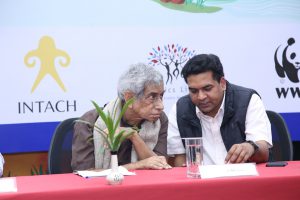India’s National Democratic Alliance government headed by Narendra Modi has emphasised cleaning rivers – especially the Ganga – and improving irrigation efficiency throughout the country. It has also revived the controversial project to interlink India’s rivers. Through it all, Shashi Shekhar, secretary in the Ministry of Water Resources, River Development and Ganga Rejuvenation, has been a key figure behind the scenes. Now, a few weeks before his retirement, the ministry’s top official describes the problems and prospects of India’s water sector.
A few days ago you said at the conclusion of India Rivers Week that the biggest problem facing the country’s water sector was the politician-bureaucrat-contractor nexus. Can you explain what that means?
Shashi Shekhar (SS): Look at irrigation works. Construction has money. Any construction with a lot of earth work (such as building a reservoir and canal irrigation) interests builders and this is also where there is less accountability. I say that I am creating irrigation but basically I am constructing assets. Look at the difference between irrigation potential and actual irrigation, and you’ll see what I’m talking about. The average gap is about 45%. The interest is not in irrigation but in constructing assets because that is where the money is. Despite states having sizeable budgets for this, the total (canal) irrigated area in the country is 10-15%. So why should it get such vast resources? It does so because the contractor is interested, and there are below the table payments. This is the problem.
What is the solution?
Shashi Shekhar: The solution lies in giving control of all irrigation – surface and groundwater – to the people who use the irrigated water, the farmers. Water is too important, too vital for our lives, to be left to others. Its control has to be in the hands of panchayats (elected village councils). They are the ones who must decide how to use water, first for human needs, then for animal needs, then for irrigation.
When the panchayats or local water users groups have the (water availability) information, they do take the correct decision. When they know the supply, they manage the demand. There are examples of this from Maharashtra and Pennagaram in Tamil Nadu. This needs to be replicated all over the country.
Also see: Why agriculture is so important to solving water scarcity
Can panchayats make effective decisions without there being an overall law regulating the extraction of groundwater?
Shashi Shekhar: We have to have joined-up use of groundwater and surface water and bring them under one umbrella. That is what we’re doing with the (planned) national water commission. We get all our water in 90 days, and that has to last for 365. We have to store water. But for the reasons I’ve said, storing it on the surface is not the best. You cannot have more surface reservoirs as India is a land deficit country, so the storage can happen only below ground level. Plus underground water does not evaporate. We have to store our water underground, and use that sensibly. Anyway, how much water do you need for irrigation? Kharif (summer) crops grow during the monsoon, when it’s raining. Rabi (winter) crops need three wettings at most.
When a village knows it has a total of 100 units of surface and groundwater available, it also knows it cannot use 400 units. We must learn to live within our means. Out of nearly 650,000 villages in the country, only about 100,000 get water from canals. The other 550,000 villages have to fend for themselves. So there is a need to prioritise the use of water and that has to be done at gram (village) panchayat level. For this, capacity building of gram panchayats is most urgent. It is an enormous task.
For equitable distribution of water, panchayats have to sit and decide. Law cannot help in this. And it works. Pennagaram recorded a 20-fold increase in income in just the first year. But for the villagers to draw up a water budget, they need to know how much water they have. That is where the government comes in. We have been providing one piezometer [a device which measures the groundwater pressure] for a 20 km by 20 km area. We are now increasing this to a 5 km by 5 km area. I think we should provide a piezometer for every 2 km by 2 km area.
Healthy rivers are an important part of what you’re talking about. What’s your ministry doing to restore the health of India’s rivers, especially when inter-state water disputes are worsening?
SS: In this country, we have rivers without water. They go dry for nine months and hence fail to serve their ecological functions. This includes the Ganga, our national river. Rivers and humans are competing with each other. When it comes to inter-state water disputes, nobody is thinking of the river as an ecosystem. They are fighting only for the water. Due to lack of data (on water flow and the health of the river) this has become a perpetual problem.
But don’t we have a lot of data on highly contested rivers such as the Cauvery?
SS: No, we don’t. The Cauvery agreement was drawn up in the 1920s, when its headwaters in Coorg flowed through far more forested areas. Now those forests have been largely replaced by coffee plantations, roads and other projects. Coorg does not generate that kind of water any more, and we have no data.
So what are you doing about generating more data and making it transparent and available to everybody?
SS: Yesterday (December 7) in the cabinet meeting it was decided that free (water flow) data will be made available for each river basin in real time. It will be put on our website and anybody can use it. It was also decided earlier that groundwater data for every 25 square kilometres will be made available.
Will this apply to water flow data in transboundary river basins as well – the Indus, Ganga and Brahmaputra basins?
Shashi Shekhar: That is the next step.
Moving on to Namami Gange, the government project to rejuvenate the Ganga, what is the current situation?
Shashi Shekhar: It is a difficult question to answer. I will choose to answer it in a circuitous way. No river that has been taken up for rejuvenation, be it Danube or Murray, and these are narrow rivers compared to the Ganga, have taken less than 30-40 years. So why are we talking about five years?
As far as the cleaning part is concerned, there are different types of pollution that need to be tackled like sewage, industrial waste, solid waste that flows from various households into the drains that empty in the river. Since the 1980s (when the first Ganga Action Plan was launched), the focus has largely been on two things; STPs (sewage treatment plants) and riverfront development. As far as STPs are concerned, most of them are either lying idle or are being bypassed. That is because [the builder’s] interest is to construct STP, and little more. It is just the same as for irrigation. Once it’s built, it doesn’t matter to the builder. But if salaries are paid on the basis of O&M (operation and maintenance), there will be some accountability. PPP (public private partnership) makes a lot more sense.
The real test of a river is whether it carries enough water and whether the ecology gets restored, if fish species like rohu and katla return, that will be the proof of the pudding.
When you talk about restoring rivers, do you face a problem because water is largely a state (rather than central) subject in the Indian Constitution?
Shashi Shekhar: Yes, it is a problem. When it comes to resolving disputes, the centre can step in only if the concerned states agree. No state has invoked that act of Parliament. See what Punjab is doing now (on the Sutlej Yamuna link canal issue). A change in the constitution is required. The demand for that has to come from the people. Only then will the politicians listen.
This article is a reprint from The Third Pole
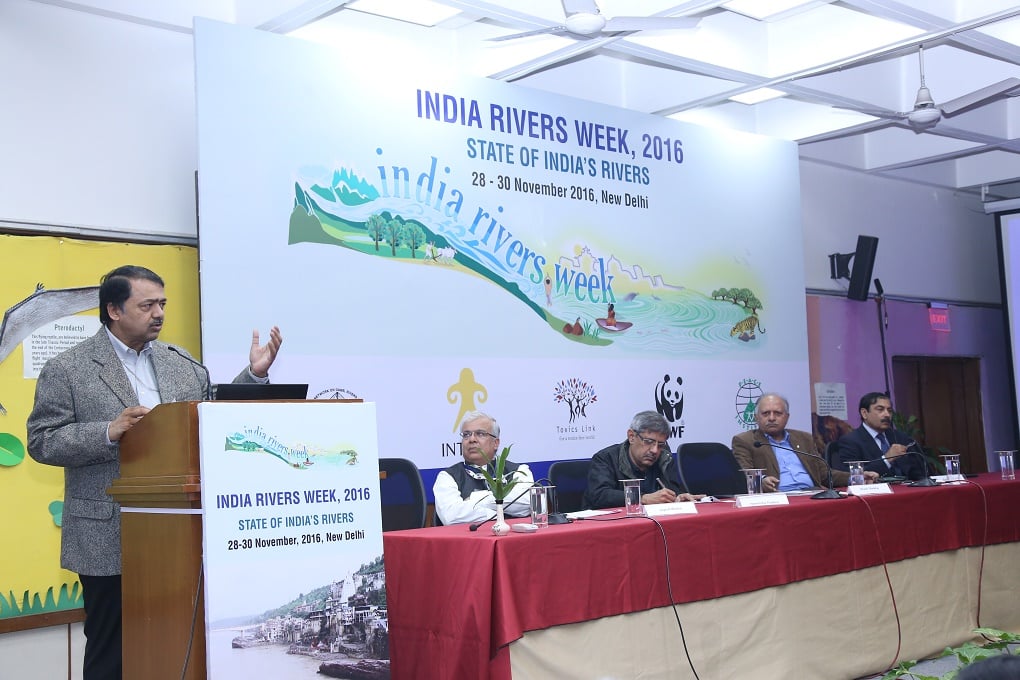
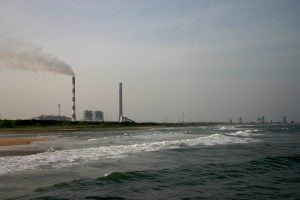
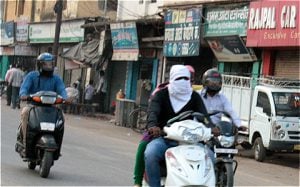
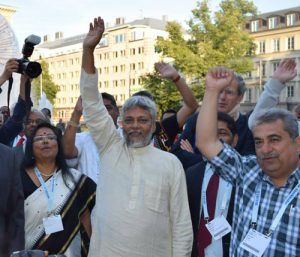
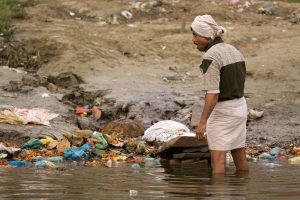

![Biomass burning is a major source of air pollution. [photo by Ahron-de Leeuw]](https://dialogue.earth/content/uploads/2016/12/Varanasi-ghat-Ahron-de-Leeuw-300x199.jpg)
